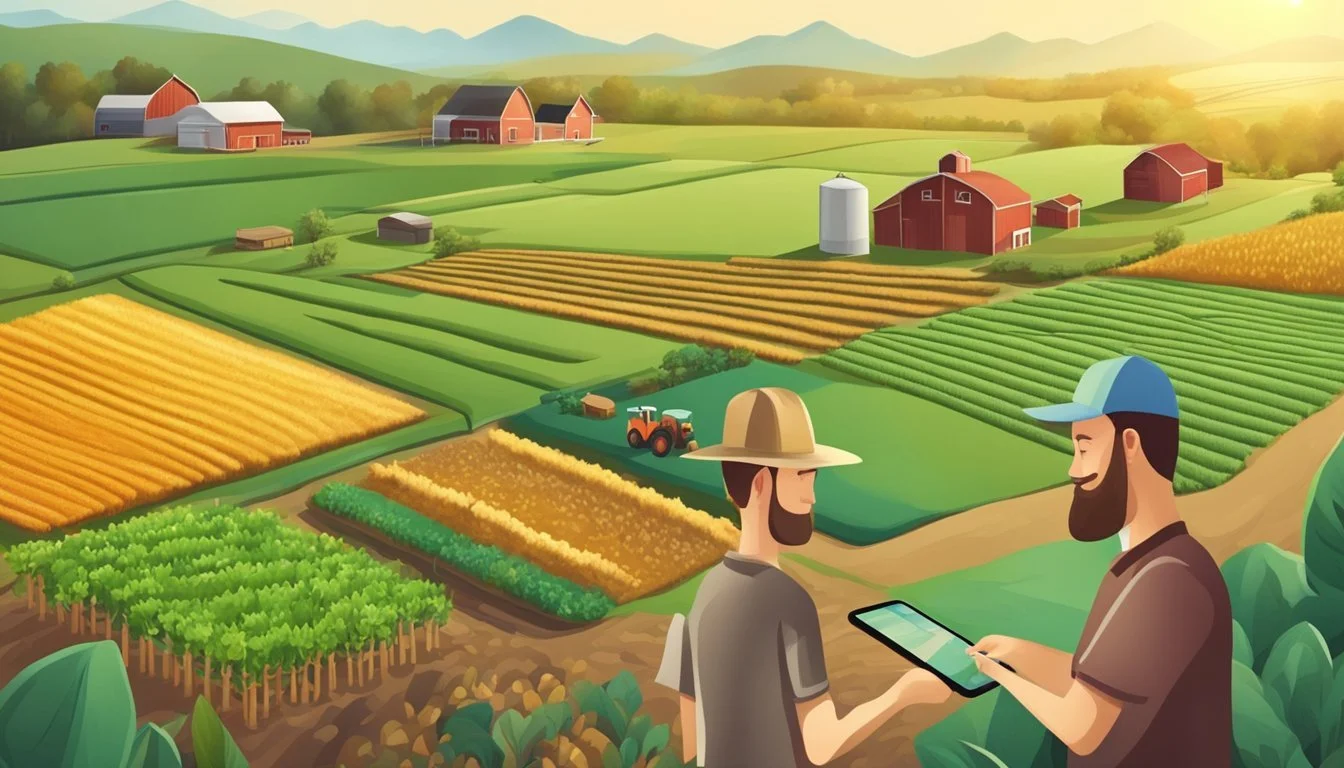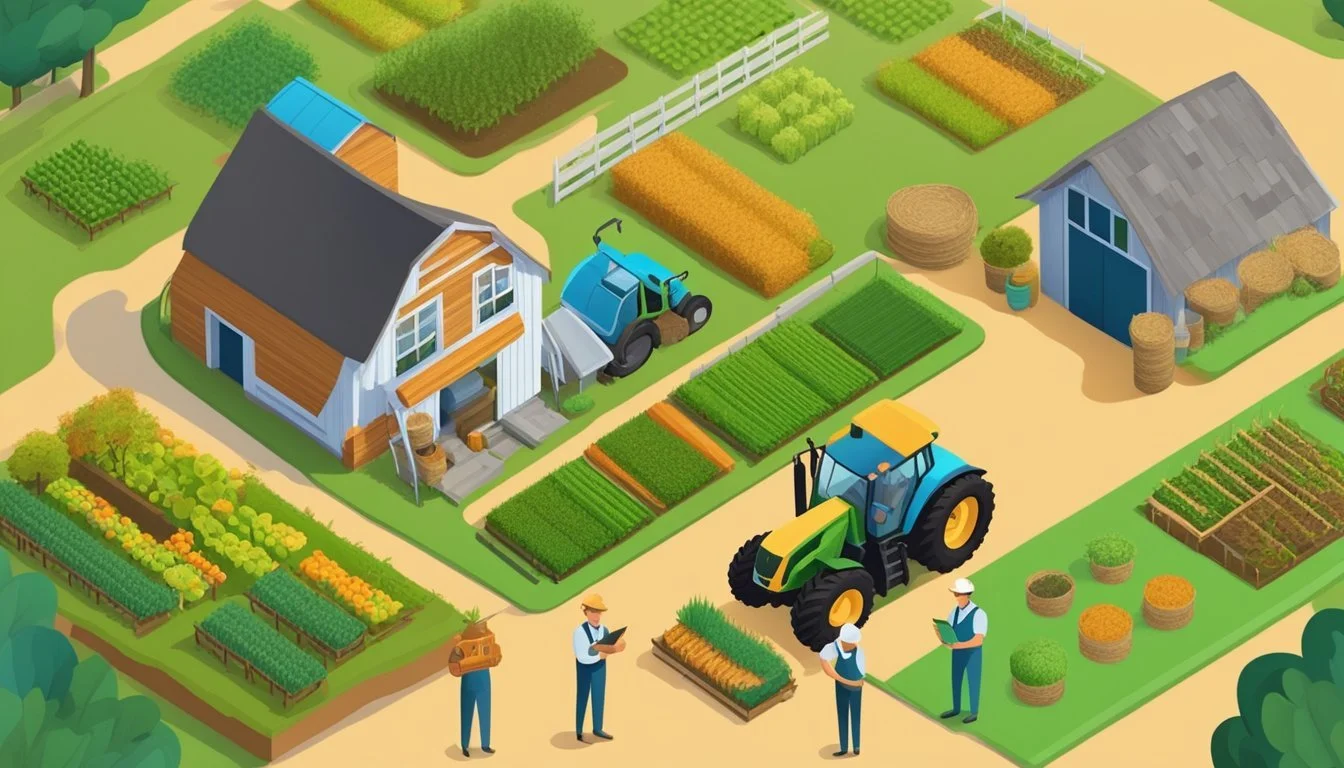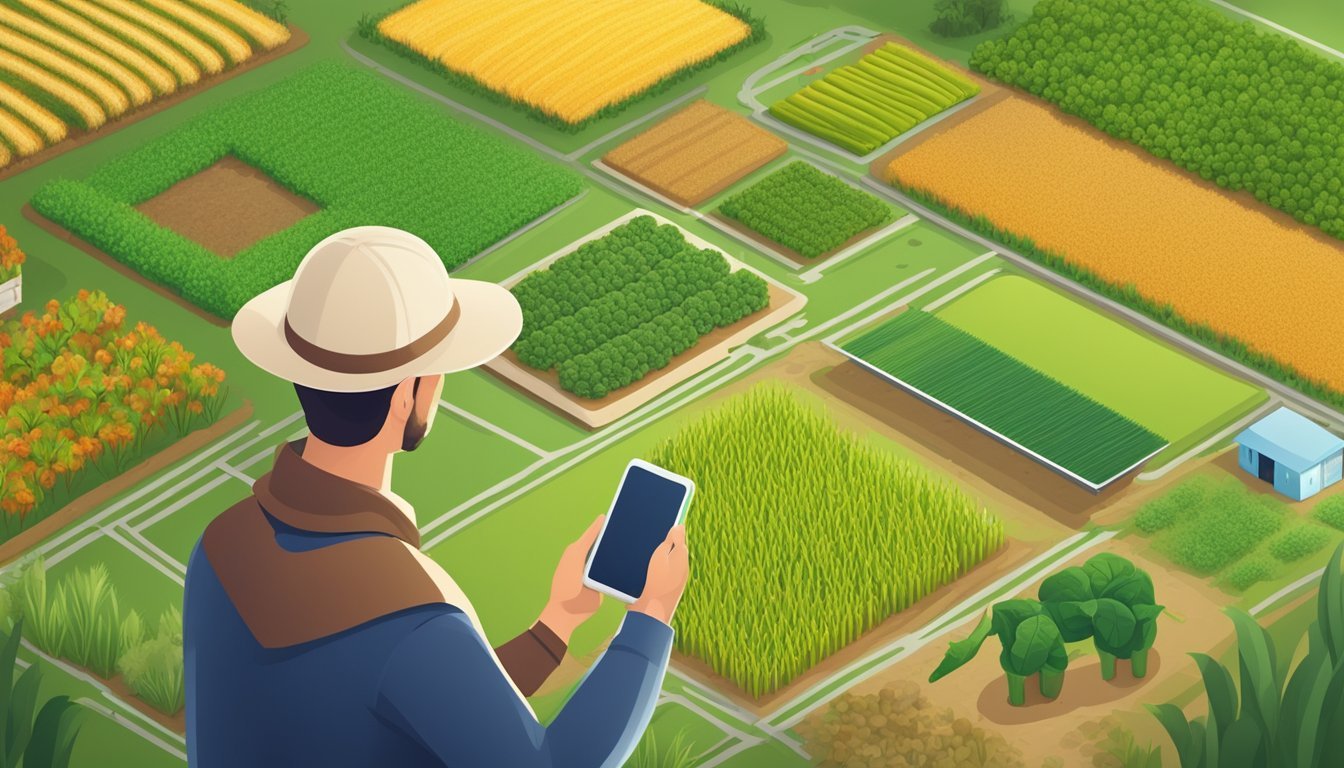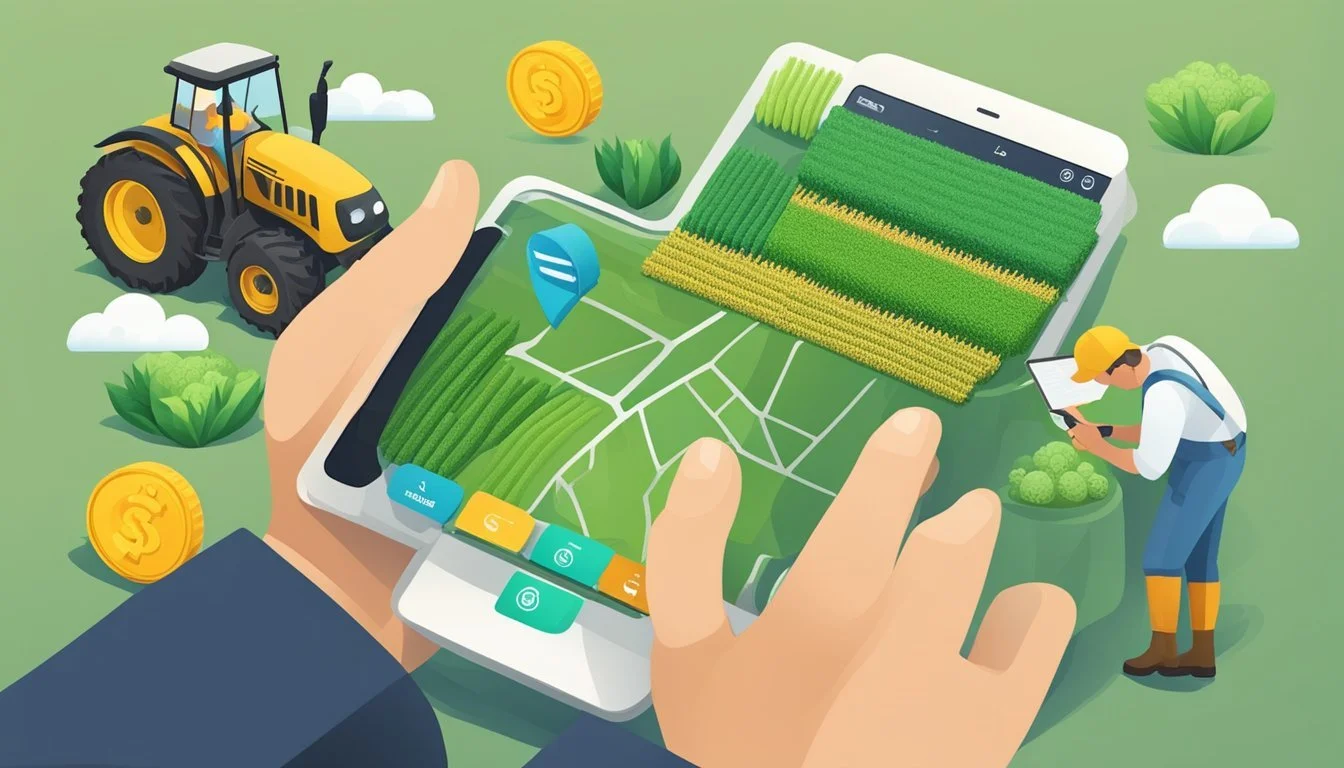The Use of Mobile Apps in Farm Planning and Management
Revolutionizing Agriculture Efficiency
In the landscape of modern agriculture, mobile apps have emerged as essential tools for efficient farm management and planning. These applications leverage the power of smartphones to provide farmers with an array of features designed to streamline agricultural operations and elevate productivity. They cater to various aspects of farm oversight, from crop monitoring to financial planning, equipping growers with critical information directly at their fingertips.
The integration of mobile technology in farming practices has transformed the way agricultural businesses are run. With intuitive interfaces and real-time data analytics, mobile apps offer a level of flexibility and control previously unattainable. Farmers can now make informed decisions based on accurate, up-to-date information regarding the health of their crops, impending weather conditions, and market trends.
By employing mobile apps for agriculture, farm management becomes more proactive rather than reactive. This technology enables the farming community to anticipate and address potential challenges swiftly, ensuring that their operations are more resilient and adaptable to the changing agricultural landscape. Whether it is precision farming or large-scale crop management, mobile apps stand as crucial allies in the quest for sustainability and profitability in the agricultural sector.
Understanding Mobile Apps in Agriculture
Mobile applications are increasingly integral to farm planning and management, offering farmers efficient tools to make informed decisions. They encapsulate a range of functionalities from weather forecasting to market price accessibility.
Growth of Mobile Applications in Agriculture
Mobile apps designed for the agricultural sector have seen an expansive growth in recent years. These apps have transformed the landscape of farm management by providing platforms where farmers can monitor crop health, manage farm finances, and gain access to a vast array of resources. According to a study highlighted on Taylor & Francis Online, mobile applications in agriculture are assisting Australian livestock farmers in extension, training, and making on-farm decisions.
Advantages of Mobile Apps for Farmers
The advantages of mobile apps for farmers are multifold. Information accessibility stands out as a key benefit, as it allows for real-time access to essential data such as weather updates, pest control methods, and crop prices. Applications such as those mentioned by CABI also offer a platform for farmers to access agricultural advice, increasing their crops' resilience against pests and diseases. Furthermore, apps can streamline farm management processes, enhance record-keeping accuracy, and facilitate communication with advisors and suppliers.
Smartphone Penetration in Agricultural Communities
Smartphone penetration in agricultural communities has been a crucial factor in the adoption of mobile applications. As smartphone use becomes more prevalent, farmers have greater access to these beneficial tools. The ResearchGate publication suggests the increasing importance of apps in agriculture, stating that farmers can find solutions and information with just a touch. This high level of accessibility contributes significantly to the adoption and utility of mobile apps in the agricultural sector.
Core Features of Farm Management Apps
Farm management apps are essential tools for modern agriculture, enhancing both efficiency and productivity. They leverage technology to streamline farming operations, providing solutions for data management, decision-making, and field monitoring.
Record-Keeping and Data Management
Farm management applications offer robust data management capabilities to maintain detailed records of farming activities. They facilitate easy storage and retrieval of information regarding livestock management, yield forecasting, and operational logistics. Such records are crucial for traceability, financial planning, and complying with regulatory requirements.
Key Components:
Field activity logs
Livestock records
Inventory tracking
Financial records
These features allow farmers to maintain comprehensive datasets that form the backbone of their business intelligence systems.
Real-Time Information and Decision-Making
Access to real-time information has revolutionized decision-making in farm management. Mobile apps provide instant updates on various aspects of farm operations, from weather changes to crop health, aiding in rapid decision-making. They embody the promise of digital technology to provide actionable insights, which can lead to improved crop management and productivity.
Notable Advantages:
Timely weather updates
Immediate alerts for pest infestations
Real-time tracking of machinery and labor
Empowered with up-to-the-minute information, farmers can make informed decisions that align with the immediate needs of their farm.
Precision Agriculture and GIS Tools
Precision agriculture and GIS (Geographic Information Systems) tools in farm management apps enable farmers to manage their land more effectively. These tools optimize farming practices by considering spatial data and variable field conditions, contributing to enhanced crop monitoring and resource management.
Examples Include:
Soil quality mapping
Crop growth tracking
Field boundary delineation
By integrating GIS technology, farm management apps foster precision and efficiency, uniquely tailoring farming strategies to the minute details of the terrain.
Mobile Technology and Farm Operations
Mobile technology has revolutionized farm planning and management by providing powerful tools for various operations, enabling farmers to make data-driven decisions with greater precision and efficiency.
Crop Management and Yield Prediction
Farmers are using mobile technology to manage their crops more effectively. Applications leveraging data from sensors can predict yield outputs by analyzing soil and weather conditions. This allows for better crop management as decisions on planting, fertilizing, and harvesting become more informed. The integration of mobile technology into precision agriculture enhances decision-making based on real-time data.
Livestock Management Software
Livestock management software helps in monitoring animal health and managing breeding cycles. Mobile apps can track individual animals, showcasing their feeding patterns, medication history, and weight gain, thus improving the overall efficiency of livestock operations. These applications contribute significantly to the well-being of livestock by enabling quick response to any arising health issues.
Equipment and Inventory Tracking
Efficient management of farm equipment and inventory is crucial for operational success. Mobile apps provide real-time tracking of equipment location and status, which minimizes downtime and optimizes usage. This helps in inventory management as farmers can maintain a better overview of supplies and predict future needs with precision, reducing waste and improving financial planning. The role of mobile apps in resource allocation and management is a fundamental aspect of modern farm management.
Integrating Mobile Apps with Smart Agriculture
Mobile apps in smart agriculture leverage advanced technologies such as IoT, drones, and AI to enhance farm planning and management. These apps provide farmers with critical data analytics and remote sensing capabilities, transforming traditional farming practices into efficient, high-tech operations.
Internet of Things (IoT) in Farming
IoT devices are revolutionizing smart agriculture by enabling the collection and exchange of data through interconnected sensors and systems. Farmers use these devices to monitor various parameters like soil moisture, weather conditions, and crop health in real-time. For instance, sensors below the soil can measure ambient parameters and send data to the cloud for processing, as seen in certain integrated smart agriculture applications. Centralized dashboards present this information, allowing for immediate insights and actions.
Remote Sensing and Drones
Drones equipped with remote sensing technology provide aerial imagery and data, critical for precision farming. These high-resolution images are processed through mobile apps, helping to identify areas that require attention, be it irrigation, fertilization, or pest control. This targeted approach can lead to efficient resource management and higher yields. The visibility provided by drones is especially valuable, as smart agricultural apps are often designed to be used in the field for instant decision-making, and are accessible both on-site and remotely.
Artificial Intelligence and Data Analytics
In the realm of smart agriculture, artificial intelligence (AI) and data analytics play a vital role in predictive analysis and in making informed decisions. By analyzing the extensive data collected from IoT devices and sensors, AI algorithms can forecast weather patterns, predict plant diseases, and recommend crop rotation strategies. This enables better agricultural management by optimizing inputs and maximizing outputs, while also protecting the environment. Smart farming apps rely on AI to manage vast amounts of data, from climate factors to soil characteristics, enhancing the agricultural management process.
Economic and Environmental Sustainability
Mobile apps in farm planning and management play a crucial role in bolstering economic resilience and lessening environmental footprints, offering farmers tools to make informed decisions and adapt to shifting consumer demands.
Improving Profitability Through Apps
Farmers can harness mobile applications to increase the profitability of their operations. Real-time access to market prices enables producers to sell their goods at the most advantageous times, potentially boosting income. Apps leveraging data analytics provide insights into efficient resource allocation, decreasing unnecessary expenditures on inputs like seeds and fertilizers. They help predict weather forecasts with precision, allowing for better crop planning and protection against adverse conditions, resulting in cost savings and yield optimization.
Reduction of Environmental Impact
Reduction of the environmental impact is a significant benefit of using mobile apps in agriculture. These tools aid in implementing precision farming techniques that optimize the use of water and fertilizers, reducing runoff and negative effects on ecosystems. By providing farmers with satellite imagery and data on soil health, apps contribute to better land management practices, encouraging the maintenance of landscape sustainability. Sustainable farming practices are not just good for the planet; they also resonate with environmentally conscious consumers.
Supporting Small-Scale Producers
Small-scale producers often benefit greatly from mobile app integration into their farm management strategies. These technologies can help level the playing field by providing access to information that was traditionally available to larger operations, such as detailed currency trends and consumer demand analytics. By applying tailored recommendations from mobile applications, small-scale producers can optimize their workflows and resource usage, leading to significantly improved economic viability and reduced environmental impact.
Market Dynamics and Information Access
Mobile apps are transforming how farmers understand and engage with market dynamics by providing access to real-time market and price information. These tools enable producers to make informed decisions, connect with digital marketplaces, and communicate through various channels.
Access to Market and Price Information
The proliferation of smartphone applications has made it easier for producers to obtain current market prices and other vital market information. Apps like the USDA Market News Mobile Application offer nearly 800 livestock, poultry, and grain market reports, allowing farmers to track pricing trends and demand in real-time. Timely information about market fluctuations empowers farmers to sell their products at fair prices, stabilizing income and planning more effectively for future crops.
Digital Marketplace and Agribusiness Network
Farmers are leveraging mobile apps not just for information, but also to access digital marketplaces and integrate into broader agribusiness networks. As mentioned in a ResearchGate study, these apps provide crucial functionalities for farm management, supply chain interaction, and reaching new markets. Digital platforms facilitate direct transactions between producers and buyers, streamlining the supply chain and potentially increasing profit margins.
Social Media and Omnichannel Communication
Social media platforms and omnichannel strategies are indispensable tools for today's forward-thinking farmer. Through platforms detailed in articles like How Mobile Apps Can Benefit Farmers in the Agricultural Industry - 9series, agribusinesses can enhance their presence in the market. They use these channels for marketing their produce, engaging with consumers, and communicating with other stakeholders. Omnichannel approaches ensure consistent messaging across various touchpoints, reinforcing brand identity and expanding market reach.
Challenges and Considerations
When integrating mobile applications into farm planning and management, stakeholders must weigh several challenges and considerations. This section critically evaluates the trade-offs of digital agriculture, addresses the technological hurdles such as internet accessibility, and underscores the importance of safeguarding data privacy and security.
Pros and Cons of Digital Agriculture
Pros: Digital agriculture, through the use of ICT tools and mobile technology, facilitates better communication and collaboration among farmers. This includes efficient resource management, timely decision-making, and access to real-time data.
Cons: However, there's a steep learning curve to effectively utilize these technologies, and the upfront cost can be prohibitive for smaller operations. Also, these tools can lead to an overreliance on technology, potentially marginalizing traditional farming knowledge.
Overcoming Connectivity Issues
The efficacy of mobile apps in farming is contingent upon reliable internet connection. In rural areas where connectivity issues are prominent, the inability to transmit data in real-time can impede the successful adoption of mobile applications. Strategies must be put in place to enhance network infrastructure in these regions.
Data Privacy and Security Concerns
While mobile apps can streamline farm management, they raise data privacy and security concerns. Farmers must be vigilant in understanding the terms of service and privacy policies of these apps to ensure sensitive information about their land and farming practices is protected from unauthorized access.
Future Directions in Farm Planning and Management
Emerging technologies such as augmented reality (AR), robotics, cloud-based solutions, and automation are reshaping the landscape of farm planning and management. These advancements promise to enhance the precision and efficiency of agricultural operations and extend the reach of agricultural extension services to farmers globally.
The Role of Augmented Reality and Robotics
Augmented reality and robotics are set to play pivotal roles in the future of agriculture. AR can provide farmers with real-time data visualized on top of the physical environment, such as overlaying growth patterns or soil conditions directly onto a farmer's field of view. Simultaneously, robotics, with advancements in machine learning, can perform tasks such as weed control, harvesting, and precision planting with minimal human intervention.
AR use cases:
Diagnosis of plant diseases
Calibration of equipment settings
Robotics in action:
Autonomous tractors
Robotic arms for harvesting delicate fruits
Cloud-Based Solutions and Automation
As farm management moves into the digital age, cloud-based platforms offer robust capabilities for data storage, analysis, and agricultural planning. Furthermore, automation in cloud environments enables real-time decision-making, efficient resource allocation, and scalability of operations without significant infrastructure investment.
Farmers using these platforms can access:
Data dashboards to monitor various metrics
Automated alerts for weather changes or equipment failure
Extending Outreach through Agricultural Extension
Through mobile applications and online platforms, agricultural extension services can extend their outreach, empowering farmers with the latest research findings and best practices. Agricultural researchers can use these tools to disseminate information efficiently and track the adoption of recommended techniques, leading to more data-driven extension strategies.
Key aspects:
Mobile applications facilitate:
Remote training sessions
Access to market information
Research distribution channels:
Online webinars
Digital libraries of agricultural data
Supporting Resources and Community
Mobile applications in farm planning and management have become integral in offering educational resources and fostering communities centered on knowledge sharing. They also play a significant role in connecting producers with consumers, thus influencing the evolution of farm technologies.
Educational Resources for Producers and Researchers
A wealth of educational resources provided by mobile apps is revolutionizing the way producers and researchers engage with smart agriculture. Mobile apps such as LandInfo and LandCover, available on Android devices, epitomize this change. These apps provide vital land mapping and classification tools that equip producers with the data needed for informed decision-making. Additionally, the integration of big data aids in managing agricultural sustainability, serving not just farmers but also the global research community.
Building a Community of Knowledge Sharing
Communications technology unites farmers globally, weaving a tapestry of shared experiences and wisdom. Mobile platforms facilitate the proliferation of user-generated content, which allows farmers to exchange insights on best practices and emerging issues. This community of knowledge sharing is bolstered by apps designed to enhance agricultural extension services, meeting the needs of smallholder farmers who require access to real-time information and advice to safeguard their crops from pests and diseases.
Role of Consumers in Shaping Farm Technology
The influence of consumers on farm technology is becoming increasingly significant. As consumers express greater interest in the origins and sustainability of their food, producers adapt technologies to meet these demands. This dynamic has implications for mobile app developers who create software that promotes transparency and traceability in the farming process. Consumer feedback often guides the evolution of these technological tools, ensuring that they remain relevant and beneficial for both producers and the end-users of agricultural products.
Case Studies and Success Stories
The advent of mobile apps has revolutionized farm planning and management, showcasing how technology can be leveraged to enhance crop yields, farm profitability, and livestock management. These case studies illustrate the tangible benefits reported by users across different types of agricultural settings.
Impact of Farm Management Software on Yield
Farm management apps like FarmLogs and Agworld have become instrumental in boosting crop yields through efficient farm planning and precision farming techniques. In one case study, farmers utilizing FarmLogs reported a significant improvement in yields due to real-time field monitoring and data analytics. These tools allowed for better decision-making regarding planting and harvesting times, as well as precision application of inputs, leading to a marked increase in the efficiency of resource usage.
Livestock Management Success with Mobile Apps
Mobile apps are being successfully used to improve livestock management. With features like tracking health statistics, pasture management, and feeding schedules, farmers can ensure optimal livestock health and productivity. A notable success story from a farm employing a livestock management app revealed a notable decrease in mortality rates and an increase in average weight gain per animal, highlighting the app’s role in augmenting profitability.
Precision Farming Case Studies in Developing Countries
Developing countries have seen a significant impact from the use of mobile apps in agricultural practices. Precision farming has become more accessible with affordable mobile technologies, where farmers there have reported better crop management and reduced waste of resources. Initiatives such as the Mobile Market Information Service and others included in ICTs for farmers' case studies demonstrate how these apps empower farmers through access to market and weather information, contributing to informed decision-making and enhanced crop profitability.
Conclusion
Mobile applications have significantly transformed farm planning and management, offering tools for decision support systems that enhance the productivity of farms. They serve as gateways to agricultural research, connecting farmers with the latest advancements from scientists and information management experts.
Through the integration of mobile technology, farmers access real-time data, leading to more informed decisions. These apps support various aspects of farming—from crop monitoring to inventory management—improving both the efficiency and effectiveness of agricultural operations.
Agricultural information is now more accessible than ever; mobile apps have democratized knowledge that was once exclusive to professionals. With these advancements, individuals involved in agriculture can optimize the use of their resources, thus reducing waste and increasing yield.
In recognition of this technological impact, entities across the agricultural sector continue to invest in the development of mobile applications. These drive further innovation and supply farmers with the decision-making power necessary for modern agriculture.








